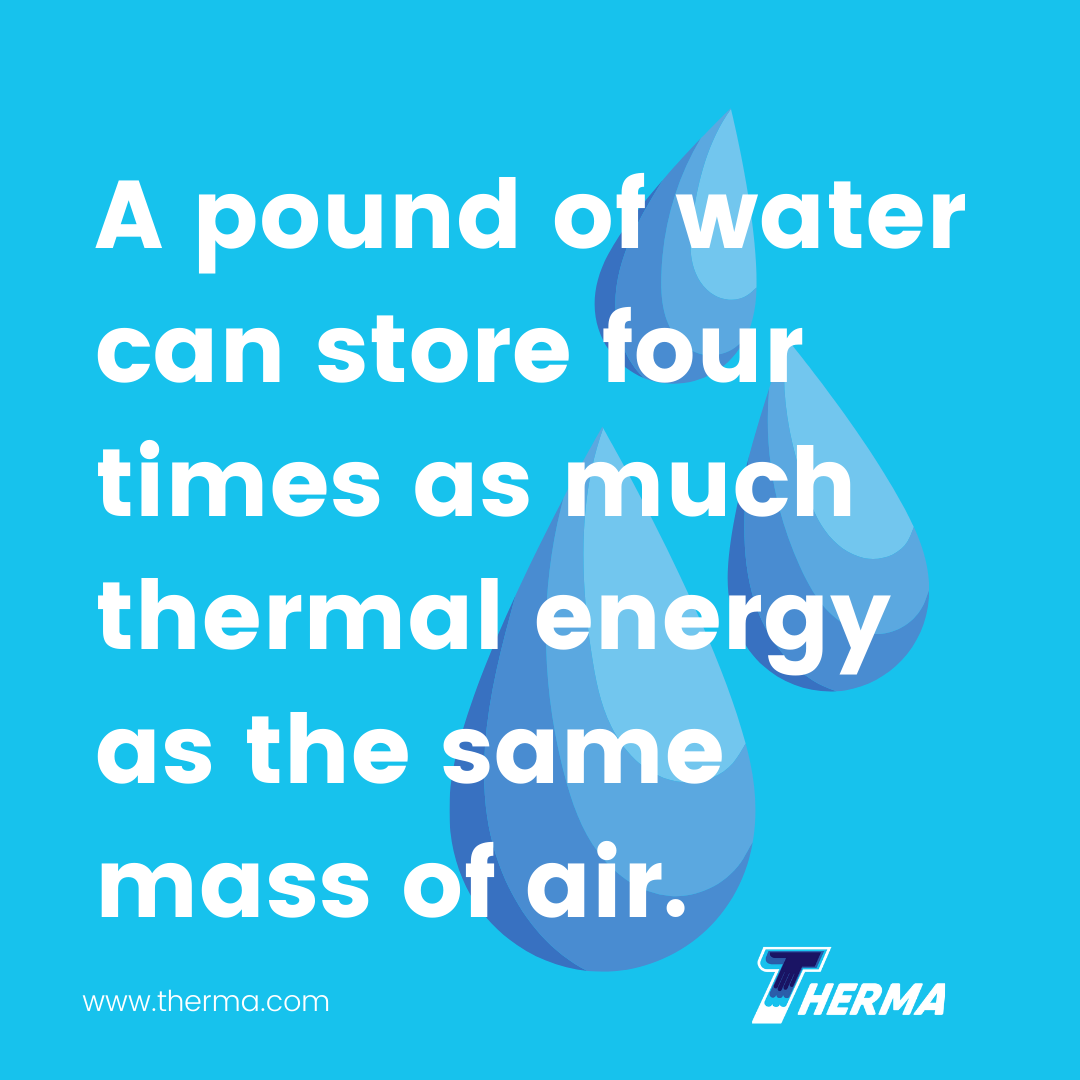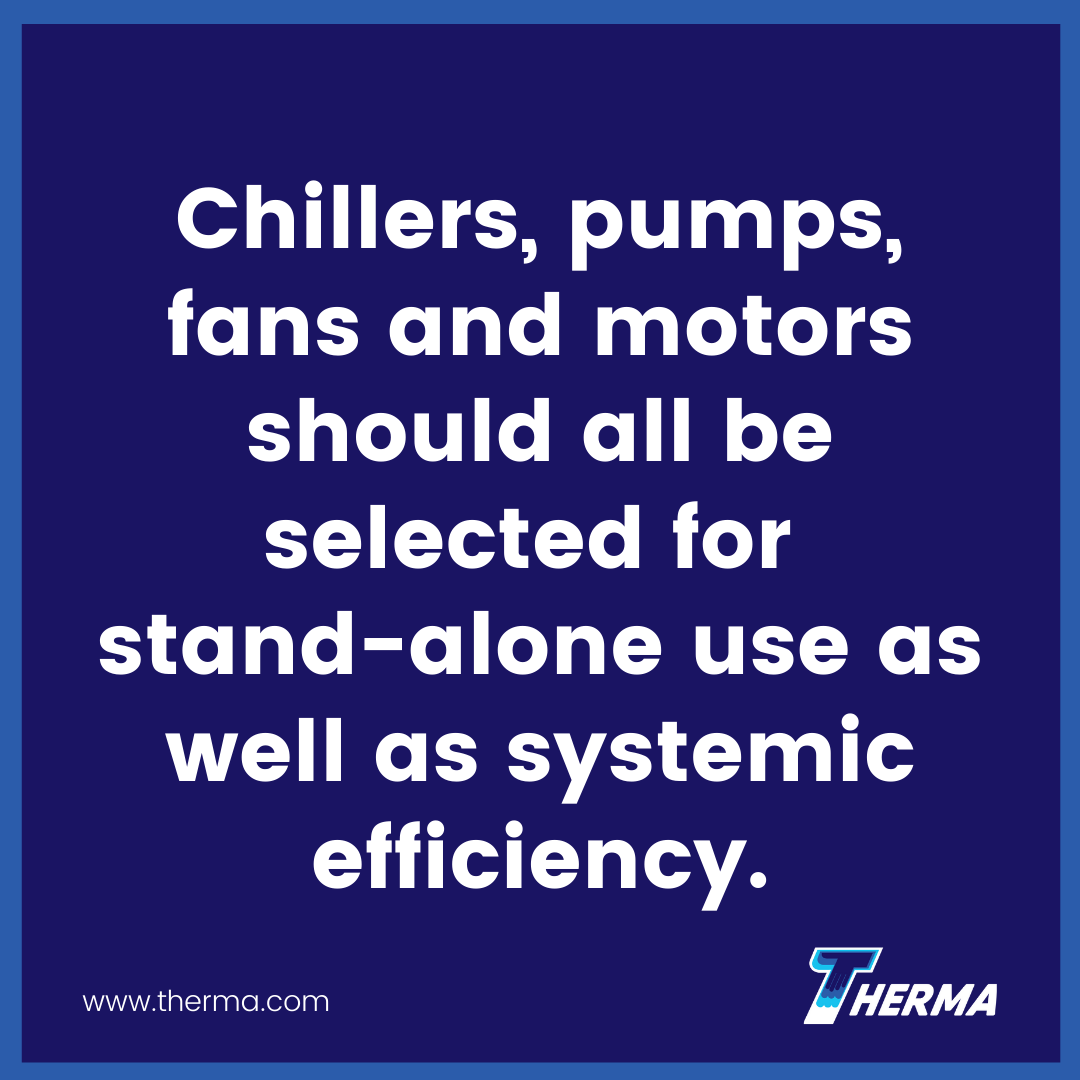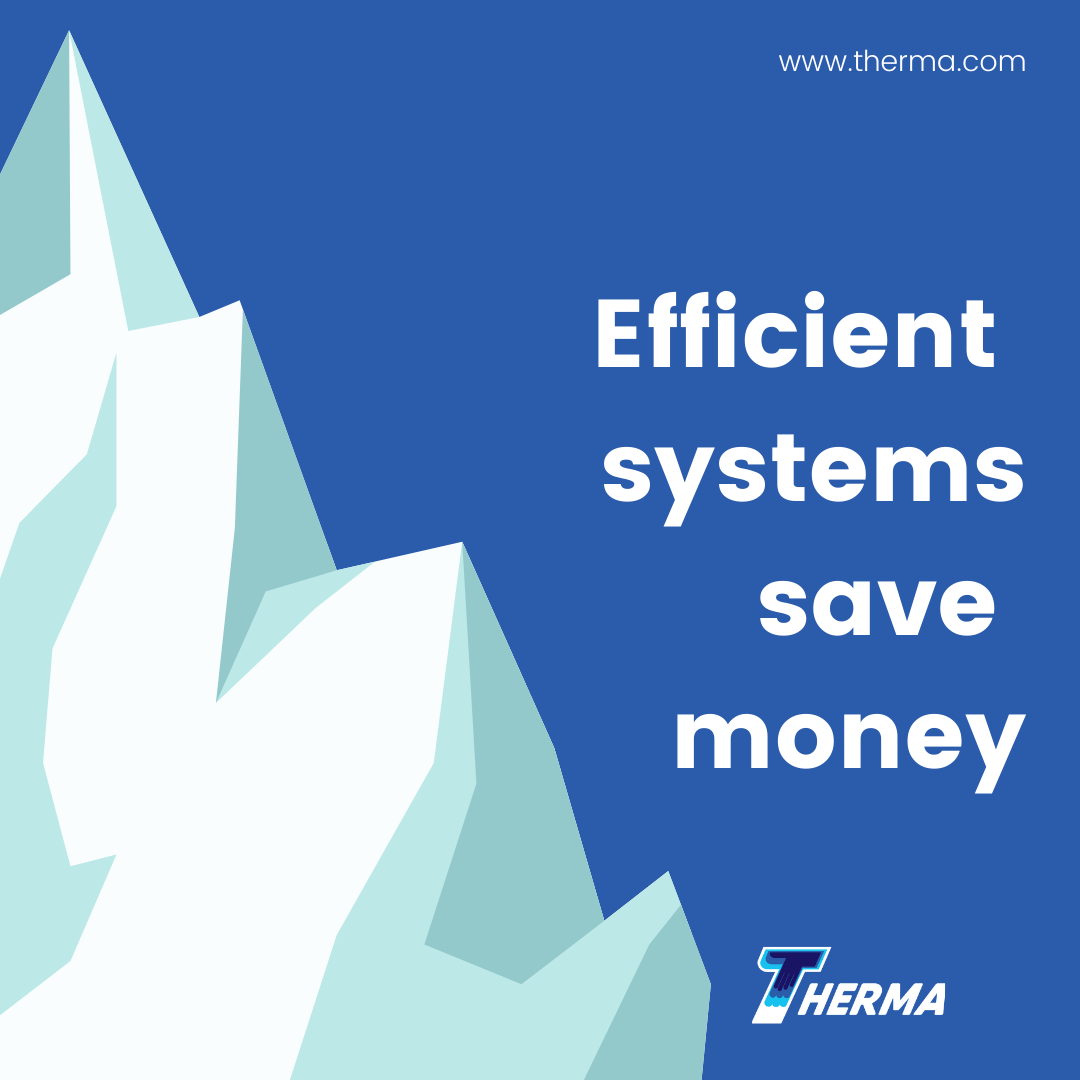Chiller Plant Design Considerations
By Ruth Seeley
By piping centrally generated chilled water through a building to serve individual tenant spaces, single floors or several floors, chiller plants provide cooling for large and multi-building campuses. Chilled water pipes are much smaller than air ducts; a pound of water can store four times as much thermal energy as the same mass of air, and has a much smaller volume due to its density. Water is also a much more space-efficient heat transfer medium than air and it works particularly well in smaller spaces.
 Increased thermal capacity and higher density makes water an ideal medium for space-efficient heat transfer. That means chiller plants offer greater energy efficiency, better controllability, longer life and have less space requirements because they’re component based.
Increased thermal capacity and higher density makes water an ideal medium for space-efficient heat transfer. That means chiller plants offer greater energy efficiency, better controllability, longer life and have less space requirements because they’re component based.
Components of chiller plants include one or more chillers, chilled water circulation and condenser pumps, cooling towers, piping to connect components, and cooling coils to transfer heat from the supply air stream and into the chilled water—although not all buildings, especially in multi-campus installations, will have dedicated chillers or cooling towers.
Chiller plants may instead be connected via distribution piping systems to larger thermal utility networks or district cooling plants. Designs for this kind of chiller require careful load diversity analysis, especially of peak load differences.
Code Requirements
Codes, standards, regulations and permitting requirements governing the location of buildings and equipment—including central plants, cooling towers and buried piping systems—are the first elements to consider in chiller plant design. Fuel handling and storage, emissions and noise controls, water quality and safety items are other considerations. Failure to meet code ultimately means expensive design modifications.
The American Society of Heating, Refrigerating and Air-Conditioning Engineers (ASHRAE) is a good primary resource, with standards and guidelines that establish consensus for testing and classification methods, design, protocol, and ratings for systems and their components. These standards and guidelines define minimum values but advocate for enhanced performance.
Efficient Chiller Plant Design
Start with an efficient design concept that’s responsive to anticipated operating conditions. Two examples of efficient design concepts include the development of a variable-flow pumping system for large campus applications and the selection of the quantity, type and configuration of chillers based on expected load profiles.

Select efficient components. Chillers, pumps, fans and motors should all be selected for stand-alone use as well as systemic efficiency. Examples include premium efficiency motors, pumps that have high efficiency at the anticipated operating conditions, chillers that are efficient at both full and partial loads, and induced-draft cooling towers. Selecting a chiller that has higher part-load efficiency maximizes energy savings. If cooling is a mission-critical requirement, redundancies are necessary to ensure continuous system operation.
Ensure proper installation, commissioning and operation. Functional testing of a plant in all its operating modes through a formal commissioning process will show whether the potential efficiency of the system will be realized. If not installed or operated properly, a chiller plant can still waste energy and fail to properly serve building occupants.
Chilled Water Loads
Chilled water loads must offset building heat gain from both external weather loads and the internal loads resulting from human heat and moisture generation, lights and equipment. Cooling loads with coil-equipped air handlers transfer heat from the conditioned space air to circulating chilled-water, with the air both cooled and dehumidified as it passes over the coils. Selecting optimum coil size
and type is important for proper system performance.
Cooling Towers
As heat rejection devices, most cooling towers use water evaporation to remove process heat and cool the water. There are four kinds of cooling towers: open circuit; closed circuit; dry cooling towers that use convective heat transfer rather than evaporation; and hybrid cooling towers, or closed circuit towers that switch between wet and dry operation to balance water and energy savings in variable weather conditions.
Constant Flow Versus Variable Flow (CF Versus VF)
Condenser water piping requires a condenser water loop and pump to circulate and flow between the chiller and the building loads. Constant flow (CF) pumping systems are traditional, but newer designs include variable flow (VF) pumps. While VFs require more intricate designs and tend to be more complicated to build and operate, they offer significant pump energy savings when load is low and flow rate requirements are reduced.
Larger systems are usually best served by variable flow (VF) piping, with its lower initial costs and lower energy usage.
Pumping: Primary-Secondary (PS) Versus Variable-Primary (VP)
Primary-secondary pumps work best for modular chillers, especially if the load profile is constant. Minimum flow still needs maintaining on low load days so the chiller doesn’t cycle or turn itself off. PS pumps are recommended when constant chiller evaporator flow and variable distribution flow are required. They can be used to break up larger systems into smaller subsystems, and can provide different supply water temperatures to secondary loops without mixing valves. With their interconnected piping loops, PS pumps allow independent flow rates in each loop.
Variable-primary pumping systems maximize efficiency and performance as the condenser, chiller and chilled water loop work together. The primary pumping system varies its capacity to maintain a differential pressure across the chilled water loop, which saves pump energy at part-load conditions. The system has to maintain a minimum flow rate through the chiller, have quick unloading cooling capacity, and have condenser head pressure control. VPs require precise control systems, variable speed condenser and cooling tower fans, variable capacity compressors, variable speed water pumps, and a supply water bypass line.
Chiller Plant Design Bottom Line
Meticulous attention to detail at the design stage helps avoid expensive design modifications and ensures maximum energy efficiency and comfort for building users.
Biography
Ruth Seeley writes about artificial intelligence, books and publishing, business, homes and gardens, construction, electrical, electronic and mechanical engineering and procurement.
References:








